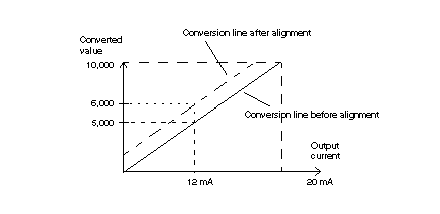|
|
Original instructions
|
|
When HART is...
|
The output slew rate is automatically set to...
|
|---|---|
|
Enabled
|
0,8...0,9 mA/ms
|
|
Disabled
|
|

|
Designation
|
Description
|
|---|---|
|
Nominal range
|
The specified measurement range
|
|
Overshoot area
|
The range of values located above the upper threshold
|
|
Undershoot area
|
The range of values located below the lower threshold
|
|
Range
|
BMEAHO0412 Range
|
|||||
|---|---|---|---|---|---|---|
|
Undershoot Area
|
Nominal Range
|
Overshoot Area
|
||||
|
Default setting
|
–2,500
|
–801
|
–8000
|
10,300
|
10,301
|
10,625
|
|
Minimum / Maximum
|
–32,768
|
...
|
...
|
...
|
...
|
32,767
|
|
Type of Range
|
Display
|
|---|---|
|
4-20 mA
|
from 0 to 10,000 (0% to 100%)
|
|
If the detected event is...
|
The output response is...
|
|---|---|
|
Task in STOP mode, or program missing
|
Fallback/Maintain (channel by channel)
|
|
Communication interruption
|
Fallback/Maintain (channel by channel)
|
|
Configuration detected error
|
0 mA (all channels)
|
|
Internal detected error in module
|
0 mA (all channels)
|
|
Output value out of range (undershoot/overshoot)
|
Value saturated at the defined limit (channel by channel)
|
|
Open circuit
|
Maintain (channel by channel)
|
|
Module hot swapping (processor in STOP mode)
|
0 mA (all channels)
|
|
Reloading program
|
0 mA (all channels)
|
|
Behavior during initial power-up and power off
|
0 mA (all channels)
|
